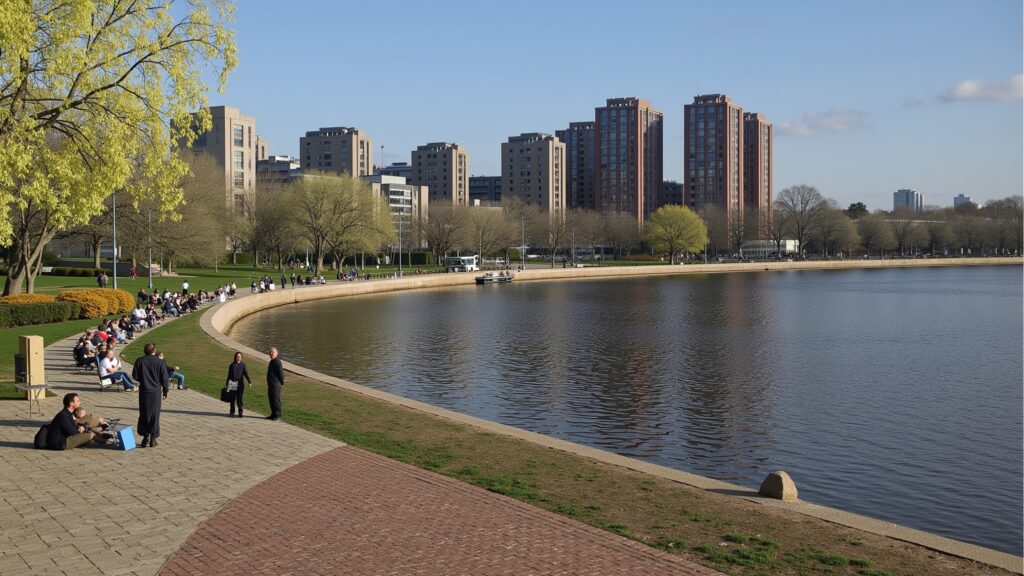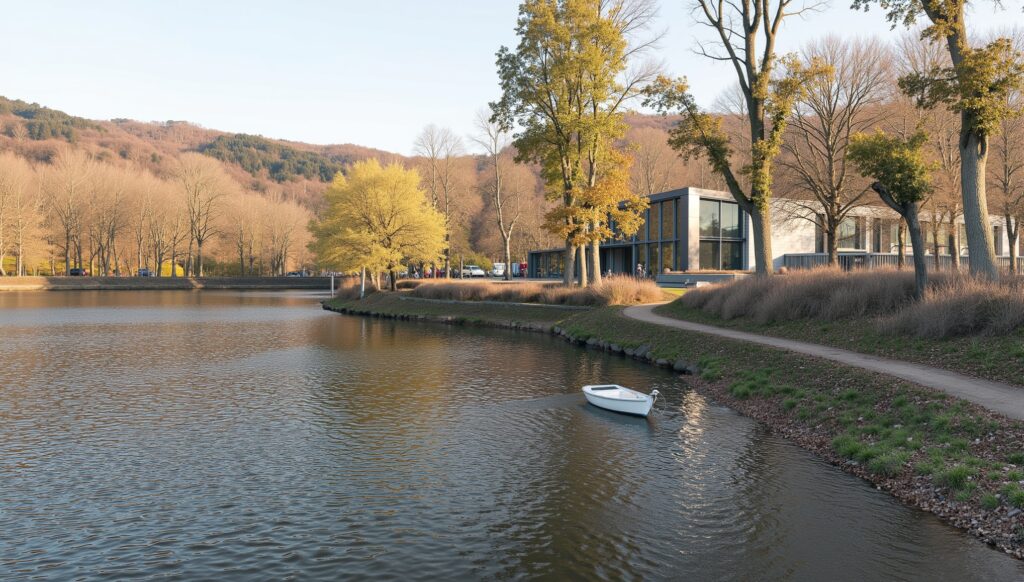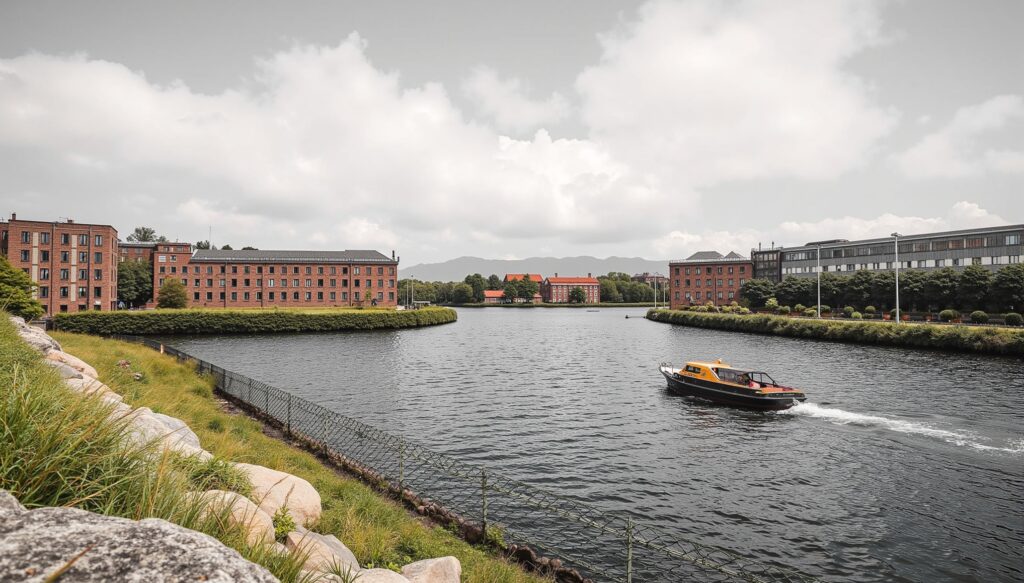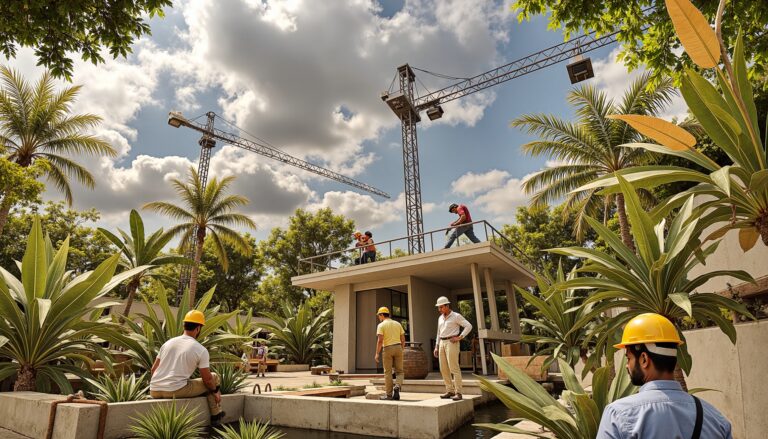Riverfront real estate is an increasingly popular segment of the property market, attracting both investors and homebuyers with its unique charm and potential for appreciation.
Properties nestled alongside rivers not only offer stunning views and recreational opportunities but also serve as lucrative investment options.
In this comprehensive guide, we will explore the many benefits of investing in riverfront properties, discuss key factors to consider when purchasing, highlight top riverfront locations, examine potential challenges, and take a look at future trends in riverfront real estate development.
Whether you’re a seasoned investor or a first-time buyer, understanding the nuances of this niche market will empower you to make informed decisions and unlock the full potential of your real estate investments.

Key Takeaways
- Riverfront real estate offers unique investment opportunities with scenic views and recreational access.
- Investing in riverfront properties can provide significant lifestyle benefits and potential for high returns.
- Key considerations for purchasing riverfront real estate include environmental factors, accessibility, and local regulations.
- Emerging riverfront locations can present untapped potential for investors looking to diversify their portfolio.
- Awareness of challenges such as flooding and regulatory changes is crucial for successful riverfront real estate investments.
Introduction to Riverfront Real Estate
When considering a property purchase that embodies tranquility and natural beauty, riverfront real estate stands out as a premier choice for many homebuyers and investors alike.
These properties, often nestled beside flowing waters, offer not only breathtaking views but also a lifestyle centered around recreation and relaxation.
In recent years, the allure of riverfront living has surged, encompassing a diverse range of options from rustic cabins to luxurious estates.
Buyers are increasingly attracted to the benefits of riverfront real estate, including opportunities for various outdoor activities like fishing, kayaking, and scenic hikes.
Furthermore, investing in riverfront properties can yield significant long-term value as these locations frequently attract interest due to their unique offerings and aesthetic appeal.
Whether you’re looking for a serene weekend getaway or a beautiful year-round residence, riverfront real estate promises a captivating experience that merges the comforts of home with the splendor of nature.
Benefits of Investing in Riverfront Properties
Investing in riverfront real estate offers a multitude of advantages that appeal to both seasoned investors and newcomers alike.
Firstly, properties situated along riverbanks often boast stunning views and tranquil settings, making them highly desirable for residential buyers and vacationers.
This natural allure can drive property values up, ensuring that your investment appreciates over time.
Moreover, riverfront real estate tends to attract a niche market looking for recreational activities such as fishing, kayaking, and hiking, ultimately enhancing rental income potential for investors in short-term rental markets.
Additionally, these properties often come with not just aesthetic benefits, but also the chance for unique development opportunities, such as eco-tourism or private retreats, dovetailing perfectly with the growing trend of sustainable living.
Overall, the combination of beauty, recreation, and the promise of financial growth makes riverfront real estate a wise investment choice for those wanting to diversify their portfolios.
‘Real estate is not merely about property, but about the potential to craft communities, and riverfront properties hold a unique charm in weaving nature with urban life.’ – Unknown

Key Factors to Consider When Buying Riverfront Real Estate
When exploring opportunities in riverfront real estate, there are several key factors to consider that can significantly impact your investment.
First and foremost, assess the location’s accessibility.
Riverfront properties that are close to major roads, amenities, and infrastructure tend to have higher value and demand.
Additionally, research the flood history and environmental regulations associated with the river; understanding seasonal variations and potential risks is crucial for long-term peace of mind.
Another factor to keep in mind is the zoning laws and permitted uses for the property, as these can dictate the extent of development you can undertake.
Finally, consider the lifestyle and recreational opportunities that proximity to a river can offer—activities such as fishing, kayaking, and hiking can enhance your living experience and increase the property’s allure.
By weighing these aspects carefully, you can make informed decisions that align with your goals in the realm of riverfront real estate.
Top Riverfront Locations to Explore
When exploring Costa Rican real estate, riverfront properties offer a unique blend of natural beauty and tranquility that attracts both homebuyers and investors alike.
The lush, green landscapes, paired with the soothing sounds of flowing water, make these locations highly coveted.
Some of the top riverfront locations to explore include the vibrant region around the Rio Celeste, known for its stunning blue waters and abundant wildlife, and the serene banks of the Sarapiquí River, which provide ample opportunities for ecotourism and adventure activities.
In addition, the area near the Tempisque River, surrounded by rich flora and fauna, presents a great investment potential for those interested in sustainable living.
Purchasing riverfront real estate in these areas not only offers a picturesque lifestyle but also promises attractive returns due to the growing demand for properties that harmoniously blend with nature.

Challenges and Risks in Riverfront Real Estate Investments
Investing in riverfront real estate can be a lucrative opportunity, but it also comes with its own set of challenges and risks that potential investors must carefully consider.
The allure of scenic views, recreational opportunities, and potential for property appreciation often attracts buyers to riverfront properties.
However, factors such as flooding, erosion, and regulatory restrictions can pose significant challenges.
Flood-prone areas may require costly insurance and compliance with stringent building codes, greatly impacting long-term investment returns.
Additionally, the environmental impact of riverfront properties can lead to enhanced scrutiny by local regulatory bodies, making it essential for investors to understand zoning laws and land use regulations.
Moreover, maintenance of the property may entail higher costs due to the natural wear and tear associated with proximity to water.
In summary, while riverfront real estate offers unique advantages, investors must conduct thorough research and assess the associated risks to ensure a wise investment decision.
Future Trends in Riverfront Real Estate Development
As we look towards the future of riverfront real estate development, several key trends are emerging that are shaping the landscape of properties along these picturesque waterways.
First and foremost, there is an increasing demand for sustainable and eco-friendly developments that prioritize environmental stewardship.
Developers are focusing on creating properties that not only enhance the natural beauty of riverfronts but also minimize ecological impact.
This trend is closely tied to the growing popularity of wellness lifestyles, as more buyers seek homes that provide both scenic views and access to recreational activities such as kayaking, fishing, and hiking.
Additionally, urbanization is pushing developers to transform underutilized riverfront areas into vibrant mixed-use neighborhoods that blend residential, commercial, and recreational spaces.
Technology is also playing a crucial role in riverfront real estate, with smart home features and developments that use advanced infrastructure for flooding management and erosion control.
As the interest in riverfront living continues to rise, these trends indicate a shift towards more integrated, sustainable, and community-centric developments that appeal to a broad range of buyers and investors alike.
Frequently Asked Questions
What are the primary benefits of investing in riverfront real estate?
Investing in riverfront real estate offers a range of benefits, including scenic views, recreational opportunities, increased property value, and potential for higher rental yields.
Additionally, properties near water often attract buyers looking for unique living experiences.
What key factors should I consider when purchasing riverfront real estate?
Key factors include the property’s proximity to water, flood risk assessments, zoning regulations, market trends in the area, and potential for future development.
It’s also vital to consider the environmental impact and local community amenities.
Which locations are currently the best for riverfront real estate investments?
Top riverfront locations vary by country and market conditions, but cities like Nashville, TN, Richmond, VA, and San Antonio, TX, are emerging hotspots.
Researching local developments and tourism potential can also guide decisions on where to invest.
What challenges and risks are associated with riverfront real estate investments?
Challenges include natural disasters like floods, regulatory issues, environmental concerns, and maintaining property value during market fluctuations.
Investors must conduct thorough research and possibly consult with experts to mitigate these risks.
What future trends are expected in riverfront real estate development?
Future trends may include sustainable and eco-friendly developments, increased focus on mixed-use properties, and more emphasis on public access to waterfronts.
As urbanization continues, the demand for riverfront properties is likely to grow, leading to innovative developments.





